Sometimes the deadline for the task is approaching, and the work has yet to start. Not infrequently, there is a variant when every task seems significant, and you can’t decide which task, to begin with. Such situations indicate that the company has problems with prioritizing tasks. After reading this article, you will learn how to prioritize work so as not to miss deadlines.
What does it mean to prioritize tasks?
Task prioritization is the process of giving each task from the shared pool of work a different status that depends on the complexity of the work and its urgency. For this, team members must have prioritizing skills.
As a result of prioritization, the list of tasks looks as follows:
- important and urgent tasks, the implementation of which should be started immediately, are at the beginning;
- less critical but also important matters are located below.
What is a deadline and how does it affect productivity?
A deadline is a cutoff date for completing a task. The deadline is set depending on the amount of work, its complexity, and its urgency. There is a hard deadline when the result of a task not being completed within the set deadline no longer has any value for anyone. And there is a soft deadline when the matter remains but becomes smaller. A clear deadline has a good effect on motivation.
Incorrectly set deadlines can play a bad joke on the team. Underestimating the work and setting overly optimistic deadlines can lead to the team not having time to close tasks, and accordingly, the delivery of projects will be late.
Overestimating the difficulty of the task will also lead to correct deadlines. In this case, Parkinson's principle will apply: any work will last as long as it is allocated. In other words, if the actual duration of the work is no more than two weeks, and the team budgeted for it to be four, then it is likely that the work will still last that long.
Timely execution of projects guarantees a good reputation for the company and customer satisfaction, so it is almost only possible to do with adequate deadlines.

9 advices to help you prioritize tasks
There is a large number of priyomіv, yakі help to prioritize tasks as efficiently as possible. Choose a specific technique to match the style of the teamwork and the specifics of tasks. Also, the team will know in what sequence to work so as not to disrupt all possible deadlines. So how to prioritize tasks and how to prioritize projects?
Make a list of all tasks
You can set priorities of work only when you have all the tasks you should complete within the framework of the project.
It is even better when each task is described in detail; it indicates who is responsible for it and monitors its implementation. It is also worth writing down the relationship between the tasks if there is one.
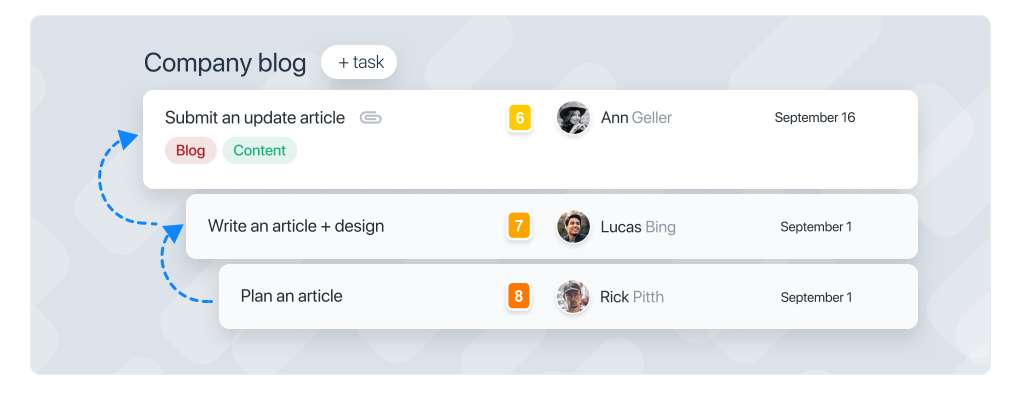
For example, it is often only possible to start writing texts for a website once there is a list of keywords. And if the texts are written, but the site still needs to exist, then there is no question of SEO promotion.
Define the company's goals
Before setting priorities, take the time to define the company's strategic goals for at least a year. Then, when they are formed and fixed, you can start setting priorities.
The manager must pass each task through the "filter" of its impact on the long-term perspective and assign a priority level to it. Remember that the high workload and busyness of the team are not synonymous with productivity and success.
Choose a method of prioritizing tasks that suit the team.
In many ways, the specific methods will depend on the project's specifics and the team's methodology. But one of the most important points here is that it suits all employees (or at least most of them).
A discussion will help, during which everyone should express their opinion. If most of the team is silent and doesn't say anything, it doesn't mean they like everything. Most likely, there will be problems that someone should have dared to tell right away.
The method chosen unilaterally by the management will speed up the allocation of tasks. But the quality of such tasks prioritization and other team work is in question.
We will talk about various prioritization methods and techniques below.
Highlight urgent tasks
We wrote above that there are hard deadlines for some tasks, after which the result is worth nothing. Therefore, these tasks must be performed as a matter of priority. At the same time, it is essential to convey to the team why this is happening in this way.
The explanation will help to avoid misunderstandings that will lead to financial losses and deterioration of the company's reputation in the market.
Get rid of competing priorities
When a team works on several projects simultaneously, one employee can receive several tasks with the highest priority and a deadline for the same date. Such a situation is difficult, but the manager can resolve it. For this, you need the following:
- Communicate with project managers and colleagues, and discuss the progress of tasks. When competing priorities appear, it is possible to specify when the performer needs a result. Some customers need the report in the morning, and some need it in the evening. The puzzle will come together.
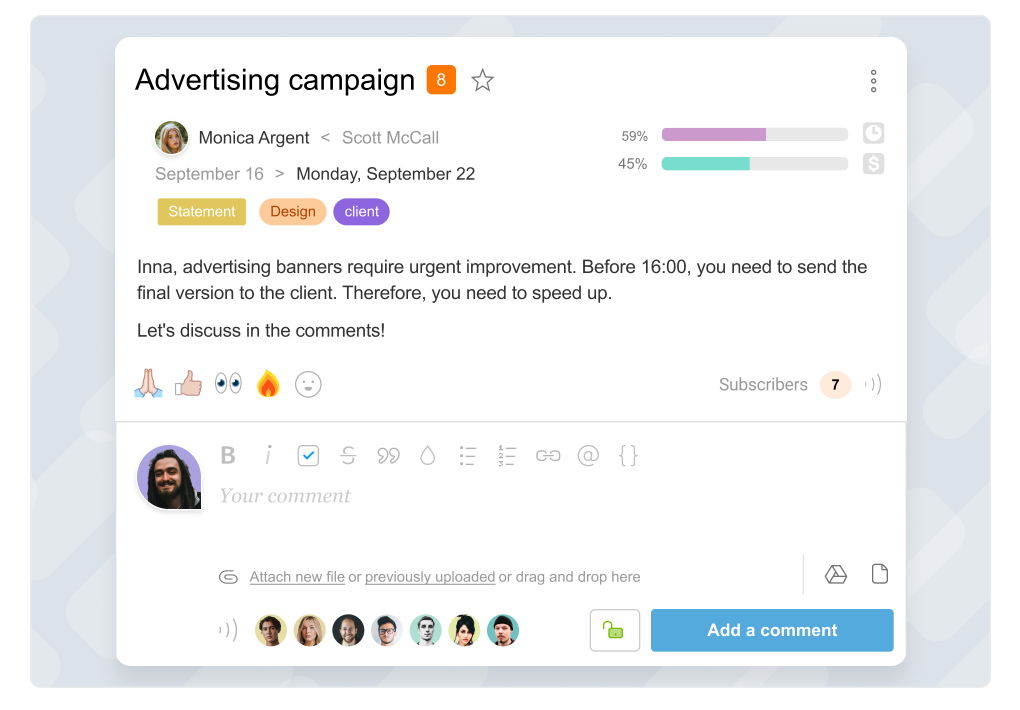
But work on both tasks must end in the morning of one day. Then you will need to look for an option in which someone will help the key employee with the task and perform routine actions.
So, the better communications are established, the less likely competing priorities will arise and the easier it will be to resolve issues with them.
- Have a time scale for the task. It may be that the manager does not know the actual workload of the team. If you show him who has and how many tasks and explain that there won't be enough time for one more, then probably the deadline can be moved, or someone can appoint someone else responsible for the task.
It is also advantageous when you already have data on how much time it takes to complete typical tasks. Then situations with competing priorities will occur less often because the initial planning will be more precise.
Use the calendar to plan tasks.
There will definitely be fewer unpleasant surprises when there are specific to-do lists for a particular day. In this way, you can plan your efforts, and if something needs to go according to plan, you can immediately understand how to adjust the schedule for the following days.
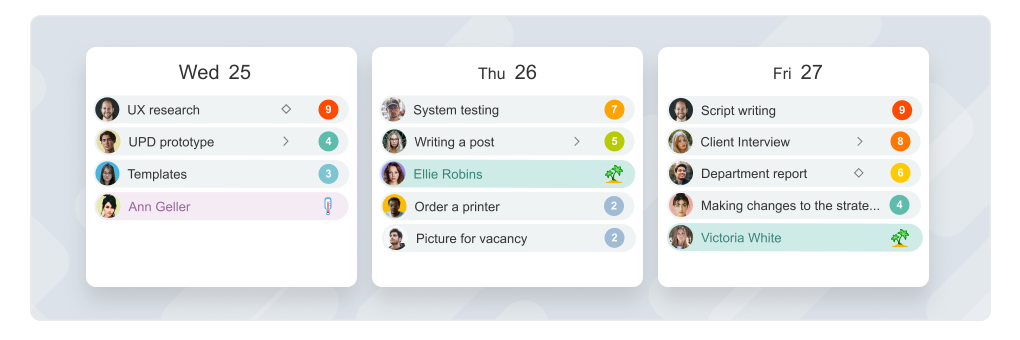
It is essential in teamwork because realizing there have been changes, and you can look in the calendar with which of your colleagues you have related tasks and notify them about it so that the person also adjusts his plans.
Be realistic about your expectations
Set priorities and conscientious work are no guarantees that everything will go as planned, so you should be cautious. It is better to understand that there is always a place for force majeure. Still, at the same time, with adequate planning, realistic deadlines, and correctly set priorities, there is time to maneuver and correct the situation.
Reflect on your efforts regularly
If the list of tasks is extensive, most of them are voluminous and long-term, you can plunge into sadness from the fact that the work does not stand still, and the list of tasks does not get smaller. To avoid this, always remind yourself that you are performing strategic tasks. And to make it easier morally, try:
- Break large tasks into several smaller ones. Mark each done. So you will see progress.
- Find tasks in the list that you can complete quickly. Try to set at least one such study every day and close it. It also motivates and shows that you are moving forward.
Use software for effective prioritization of projects
There are a large number of tools that help prioritize projects and tasks, plan work and successfully meet deadlines. One such tool is Worksection. It is a Ukrainian cloud task manager, the robust functionality that allows users to monitor the project's status as a whole and individual tasks in it, track deadlines, exchange information, and much more.
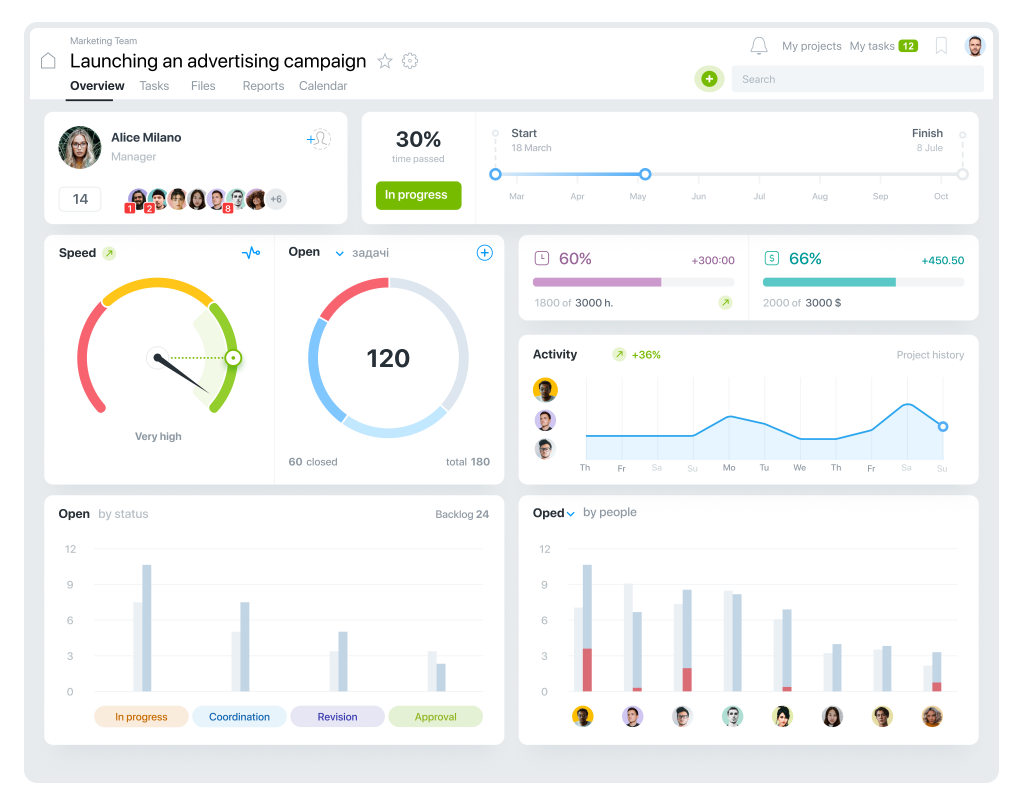
Among the significant advantages of Worksection:
- project dashboard;
- pleasant and straightforward interface;
- time tracker;
- calendar;
- Gantt chart and Kanban board;
- fast and high-quality technical support;
- reliable protection of project data.
Previously, we wrote about other products that will help, in particular, in prioritizing tasks and prioritizing projects.
Methods of prioritizing tasks
In addition to general advice, you should know about specific techniques to help the team work with tasks.
Grouping
You can prioritize your work by grouping tasks if you have already compiled a complete list of them. You have to group the tasks by category/idea. Example:
- by functionality (tasks necessary to implement one option fall into one category);
- by project stages (what tasks need to complete for MVP, pre-release, etc.).
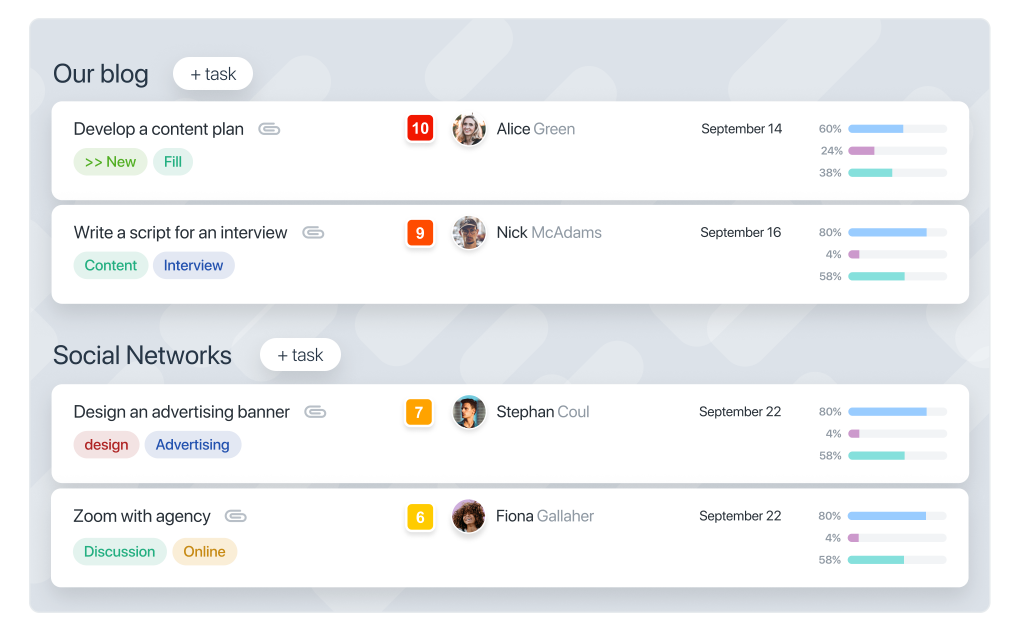
Prioritization of work using grouping allows you to see better the project picture and the relationship between individual stages and tasks.
Chunking
This approach means that all tasks should divide into groups based on some common feature and then sequentially perform tasks from one group. Then, when they complete, you can move to another group.
This method is based on the fact that it is difficult for the brain to switch between entirely different tasks. So when you have adjusted, for example, to write texts, you can make an article, a post on social networks, and a presentation in one day. And the next day, you can spend a couple of hours working on finding references for the designer, then hold a few meetings, and spend the rest of the day answering emails.
Bubble Sort technique
The bubble sort technique helps you understand how important this task compares to others on this list.
Prioritization in this technique begins with placing all work tasks in a horizontal line. Next, the first two tasks compare, determining which is more important. Finally, the more important one moves to the left.
Then the comparison process continues with the second and third tasks, the third and fourth, and so on. Finally, the team receives several points at the output, where tasks are arranged from left to right in order of importance.
"Eat a Frog"
The main idea of this technique is that you should start any work with the most unpleasant and challenging tasks. And only after their completion can you perform simpler ones.
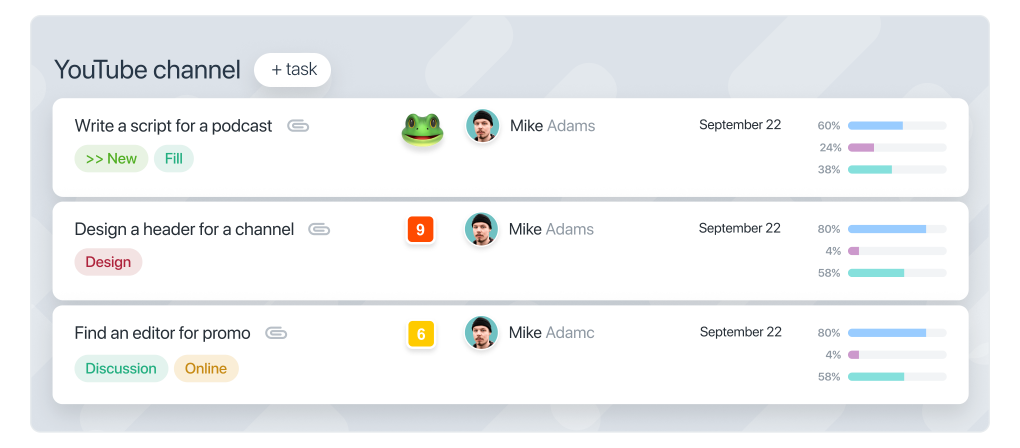
ABCDE method
The ABCDE technique is one approach not only to setting priorities but also to time management. First, they compile the entire list of tasks. Afterward, the tasks are grouped depending on the consequences if you do not complete these tasks in time.
Group A includes tasks that require the team to complete the project. Failure to fulfill the tasks of group A has severe consequences for the project.
Group B tasks are desirable to complete, as failure to assemble these items will also have negative consequences, but not as severe as group A tasks.
Group C tasks would be suitable because they will give the final product a better look. But, at the same time, their non-fulfillment does not have critically serious consequences.
Group D includes tasks that may be optional, non-urgent, and not of great interest to the project. After all, you can delegate them.
Group E contains tasks you should remove from the current iteration or the project altogether. Their implementation does not affect the final product but requires time and resources.
Eisenhower Decision Matrix
In principle, Eisenhower's decision-making matrix is similar to the ABCDE technique. The degree of importance is indicated on the Y-axis, and the degree of urgency is shown on the X-axis. Four groups of problems are placed between these coordinate axes:
Group 1 — important and urgent tasks
Group 2 — less important but urgent
Group 3 — important but not urgent
Group 4 — unimportant and non-urgent.
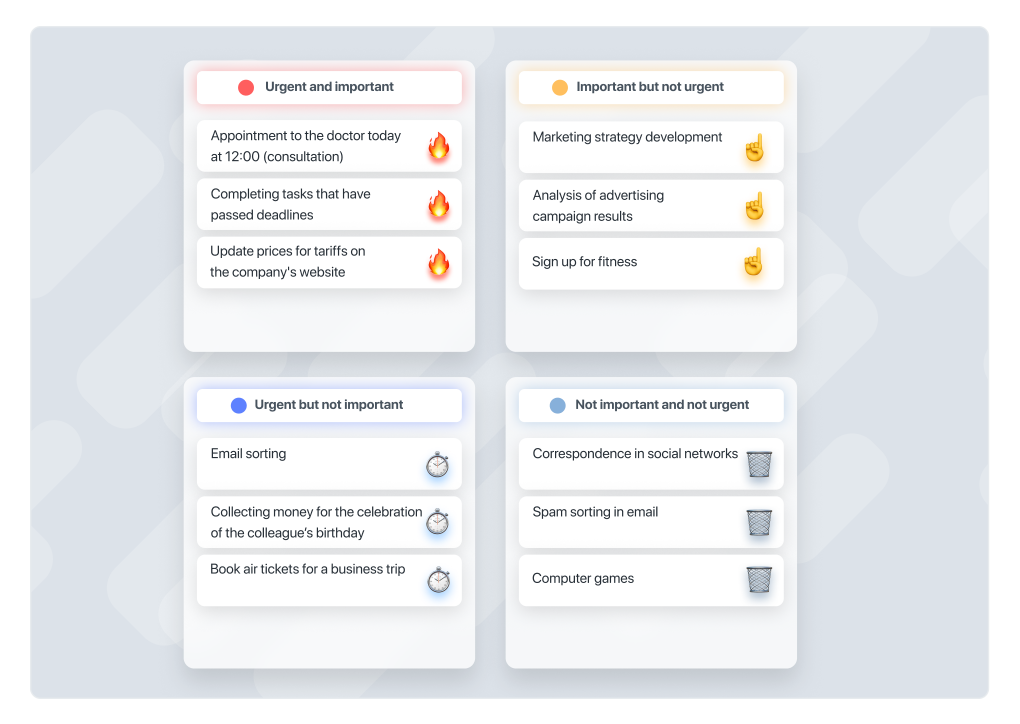
Thus, the work should be started with the first two groups, then proceed to the tasks of group 3. The tasks of group 4 are optional, so they can be completed if there is time or not.
The Hundred Dollar Method
Each team member is given a list of tasks in this evaluation and prioritization method. He has an imaginary $100 (or 100 points) and independently decides how much he is ready to "pay" (give points) for this or that task. The logic is that a difficult task "costs" accordingly. As a result, tasks with more points have a higher priority, so you need to start work from them.
Prioritizing tasks saves the time and energy of each team member, bringing the project closer to a successful conclusion without missing deadlines. We hope the above tips and techniques will help you set priorities correctly, contributing to collective and productive work.
